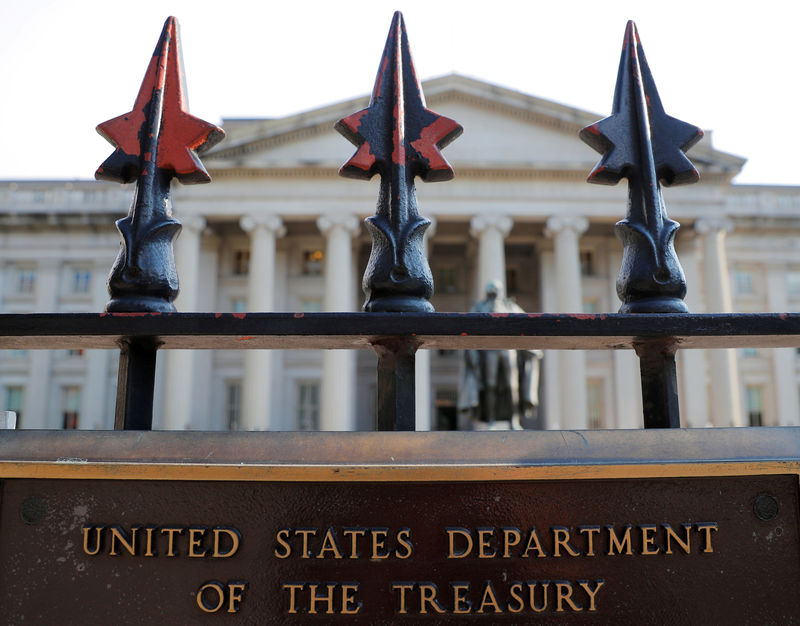By Hari Kishan
BENGALURU (Reuters) - Major sovereign bond yields, which have been low for years, are expected to be close to current levels for the next 12 months, as the global economy struggles to recover from the impact of COVID-19, a Reuters poll found.
With expectations for weak economic growth intensifying, major central banks are likely to expand their bloated balance sheets, increasing their sway over bond markets.[ECILT/WRAP]
Anticipation of a strong recovery from world-wide lockdowns to contain the novel coronavirus has helped stock markets to rally from lows hit in March.
But sovereign bond yields are not expected to return to pre-pandemic levels in the foreseeable future.
The June 19-26 poll of more than 90 fixed-income strategists and analysts found government bond yields would stay around current levels until end-2020, rising marginally by this time next year.
"We did see some (upward) pressure on bond yields, but we would argue that those pressures will only be temporary because we are still not so optimistic that there will be a simple V-shaped recovery," Elwin de Groot, head of macro strategy at Rabobank, said.
Others were similarly cautious.
"We have our outlook for longer-term sovereign yields as flat - really flat. Central banks don't want yields to rise because lower interest rates help in incentivising spending," said James Orlando, senior economist at TD.
The benchmark U.S. 10-year (US10YT=RR) Treasury yield, currently around 0.65%, is expected to rise to 1.10% in 12-months.
A benign inflation outlook, which risks turning disinflationary or deflationary, also explains the subdued yields.
More than 70% of 45 analysts who answered a separate question said disinflation or deflation because of weaker demand was a greater risk after the pandemic subsides.
The remainder predicted higher inflation because of trade friction and shifting supply chains. Those results were similar to a Reuters poll of over 160 economists published last week.
For a graphic on U.S. Treasury yields outlook:
https://fingfx.thomsonreuters.com/gfx/polling/qzjvqewxrvx/U.S.%20Treasury.PNG
Given the major central banks' uneven record on getting inflation up to target over the last decade and their commitment to keeping monetary policy loose until targets are met, bond yields are likely to stay low.
However, the Federal Reserve is not yet likely to take a more direct approach, such as yield curve control, which the Bank of Japan is using to cap sovereign yields.
"I would argue that the efforts of...quantitative easing and the forward guidance that the Fed is implementing are working, even without explicit yield curve control," TD's Orlando said.
Nearly two-thirds - 29 of 44 - of strategists who answered another additional question said the Fed will not introduce yield curve control this year. The remaining 15 said it would.
For a graphic on Major sovereign bond yields outlook:
https://fingfx.thomsonreuters.com/gfx/polling/nmovajqmkpa/U.S.%20bonds.PNG
With major sovereign bond yields seen around current levels over the next six months, U.S. Treasuries, which have out-yielded their peers for much of the past decade, are set to continue doing so over the coming year.
German Bunds (DE10YT=RR) were not expected to turn positive and yields on Japanese Government Bonds (JGBs) (JP10YT=RR) are forecast to remain at or close to zero throughout the forecast horizon. British Gilts (GB10YT=RR) were predicted to yield 0.50% in a year's time, 60 basis points lower than U.S. 10-year Treasuries.
